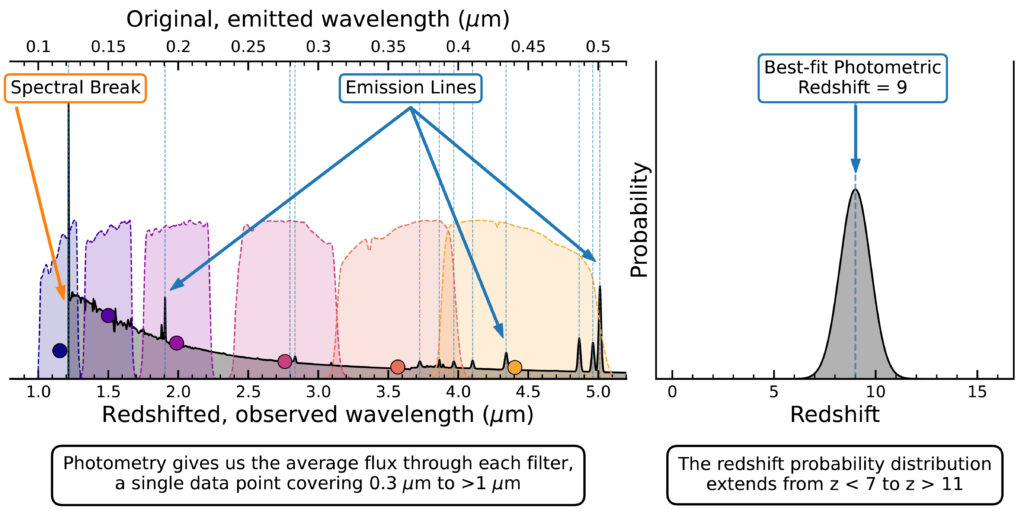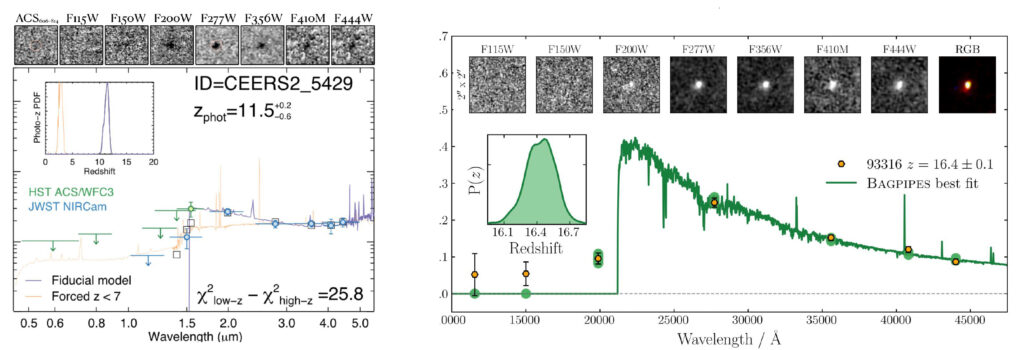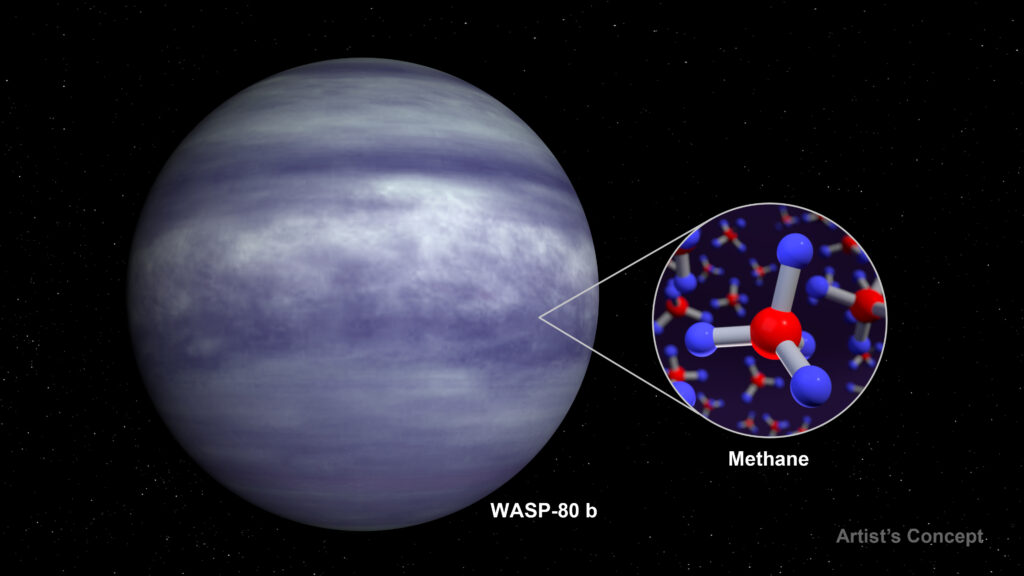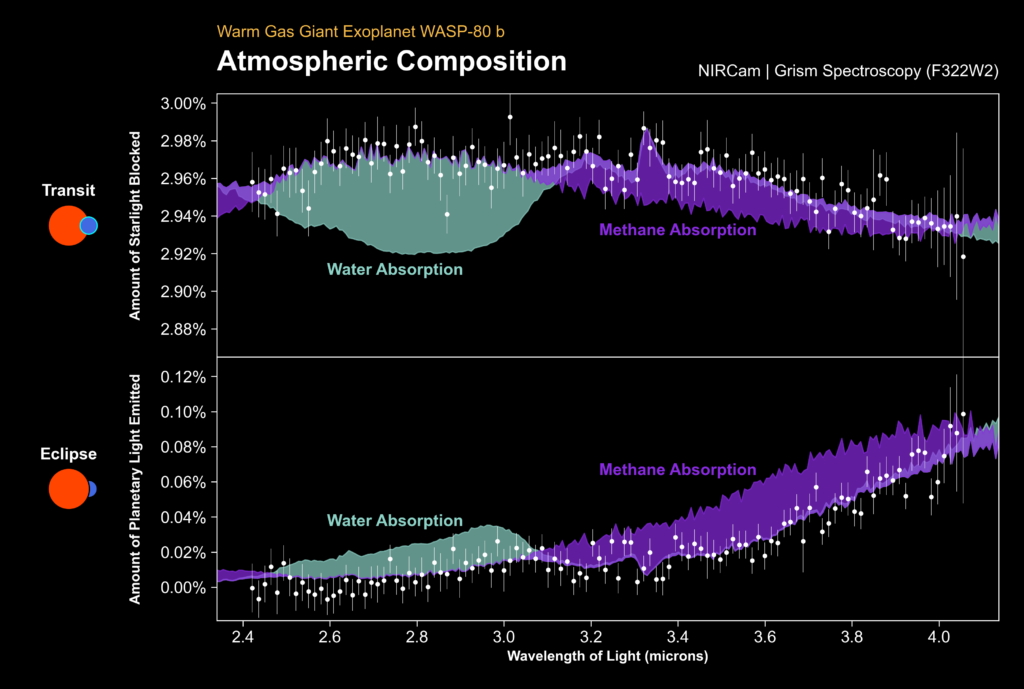Editor’s Note: This post highlights data from Webb science in progress, which has not yet been through the peer-review process.
Measuring the Hubble constant, the rate at which the universe is expanding, is an active area of research among astronomers around the world who analyze data from both ground- and space- based observatories. NASA’s James Webb Space Telescope has already contributed to this ongoing discussion. Earlier this year, astronomers used Webb data containing Cepheid variables and Type Ia supernovae, reliable distance markers to measure the universe’s expansion rate, to confirm NASA’s Hubble Space Telescope’s previous measurements.
Now, researchers are using an independent method of measurement to further improve the precision of the Hubble constant — gravitationally lensed supernovae. Brenda Frye from the University of Arizona, and a team of many researchers from different institutions around the world, are leading this effort after Webb’s discovery of three points of light in the direction of a distant and densely populated cluster of galaxies. We invite Dr. Frye to tell us more about what the team has nicknamed Supernova H0pe and how gravitational lensing effects are providing insights into the Hubble constant:
“It all started with one question by the team: ‘What are those three dots that weren’t there before? Could that be a supernova?’ The points of light, not visible in 2015 Hubble imaging of the same cluster, were obvious when the images of PLCK G165.7+67.0 arrived on Earth from Webb’s Guaranteed Time Observations of the Prime Extragalactic Areas for Reionization and Lensing Science (PEARLS) ‘Clusters’ program. The team notes the question was the first to pop to mind for good reason: ‘The field of G165 was selected for this program due to its high rate of star formation of more than 300 solar masses per year, an attribute that correlates with higher supernova rates.’

“Initial analyses confirmed that these dots corresponded to an exploding star, one with rare qualities. First, it’s a Type Ia supernova, an explosion of a white dwarf star. This type of supernova is generally called a ‘standard candle,’ meaning that the supernova had a known intrinsic brightness. Second, it is gravitationally lensed.
“Gravitational lensing is important to this experiment. The lens, consisting of a cluster of galaxies that is situated between the supernova and us, bends the supernova’s light into multiple images. This is similar to how a trifold vanity mirror presents three different images of a person sitting in front of it. In the Webb image, this was demonstrated right before our eyes in that the middle image was flipped relative to the other two images, a ‘lensing’ effect predicted by theory.
“To achieve three images, the light traveled along three different paths. Since each path had a different length, and light traveled at the same speed, the supernova was imaged in this Webb observation at three different times during its explosion. In the trifold mirror analogy, a time-delay ensued in which the right-hand mirror depicted a person lifting a comb, the left-hand mirror showed hair being combed, and the middle mirror displayed the person putting down the comb.
“Trifold supernova images are special: The time delays, supernova distance, and gravitational lensing properties yield a value for the Hubble constant or H0 (pronounced H-naught). The supernova was named SN H0pe since it gives astronomers hope to better understand the universe’s changing expansion rate.
“In an effort to explore SN H0pe further, the PEARLS-Clusters team wrote a Webb Director’s Discretionary Time (DDT) proposal that was evaluated by science experts in dual-anonymous review and recommended by the Webb Science Policies Group for DDT observations. In parallel, data were acquired at the MMT, a 6.5-meter telescope on Mt. Hopkins, and the Large Binocular Telescope on Mt. Graham, both in Arizona. In analyzing both observations, our team was able to confirm that SN H0pe is anchored to a background galaxy, well behind the cluster, that existed 3.5 billion years after the big bang.
“SN H0pe is one of the most distant Type Ia supernovae observed to date. A different team member made another time delay measurement by analyzing the evolution of its light dispersed into its constituent colors or ‘spectrum’ from Webb, confirming the Type Ia nature of SN H0pe.
“Seven subgroups contributed lens models describing the 2D matter distribution of the galaxy cluster. Since the Type Ia supernova is a standard candle, each lens model was ‘graded’ by its ability to predict the time delays and supernova brightnesses relative to the true measured values.
“To prevent biases, the results were blinded from these independent groups and revealed to each other on the announced day and time of a ‘live unblinding.’ The team reports the value for the Hubble constant as 75.4 kilometers per second per megaparsec, plus 8.1 or minus 5.5. [One parsec is equivalent to 3.26 light-years distance.] This is only the second measurement of the Hubble constant by this method, and the first time using a standard candle. The PEARLS program lead investigator remarked, ‘This is one of the great Webb discoveries, and is leading to a better understanding of this fundamental parameter of our universe.’
“Our team’s results are impactful: The Hubble constant value matches other measurements in the local universe, and is somewhat in tension with values obtained when the universe was young. Webb observations in Cycle 3 will improve on the uncertainties, allowing more sensitive constraints on H0.”
About This Article
Authors
-
-
- Brenda Frye is a professor in the Department of Astronomy at the University of Arizona and astronomer at the Steward Observatory. She is co-lead of the PEARLS-Clusters branch of the Prime Extragalactic Areas for Reionization and Lensing Science (PEARLS) team.
- Several members of the research team also contributed to this piece: Seth Cohen (Arizona State University), Patrick Kamieneski (Arizona State University), Mari Polletta (INAF Instituto di Astrofisica Spaziale e Fisica Cosmica), Justin Pierel (Space Telescope Science Institute), Wenlei Chen (University of Oklahoma), Massimo Pascale (University of California at Berkeley), Rogier Windhorst (Arizona State University, PEARLS Principal Investigator)
-
Related Links
- Published science paper: JWST Spectroscopy of SN H0pe: Classification and Time Delays of a Triply-imaged Type Ia Supernova at z = 1.78
- Published science paper: JWST Photometric Time-Delay and Magnification Measurements for the Triply-Imaged Type Ia “Supernova H0pe” at z = 1.78
- Published science paper: The JWST Discovery of the Triply-imaged Type Ia “Supernova H0pe” and Observations of the Galaxy Cluster PLCK G165.7+67.0′
- Published science paper: Spectroscopy of the supernova H0pe host galaxy at redshift 1.78
- Published science paper: Birds of a Feather: Resolving Stellar Mass Assembly With JWST/NIRCam in a Pair of Kindred z=2 Dusty Star-forming Galaxies Lensed by the PLCK G165.7+67.0 Cluster
- Accepted science paper: SN H0pe: The First Measurement of H0 from a Multiply-Imaged Type Ia Supernova, Discovered by JWST
- The full description and list of team members for Guaranteed Time Observation programs #1176 and #2738















